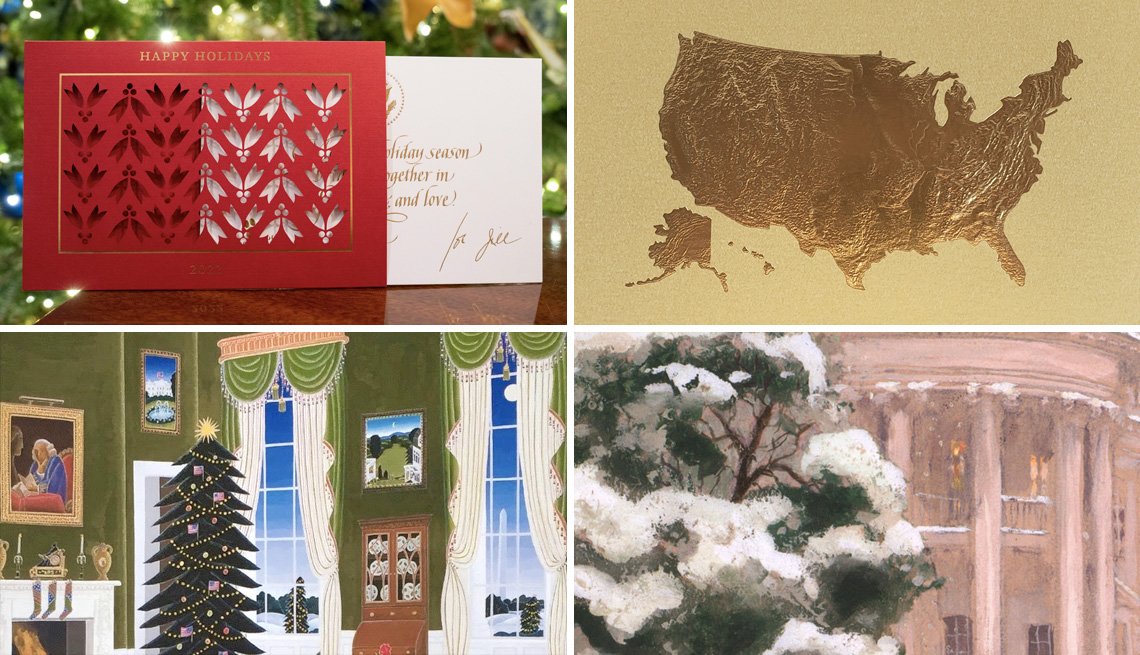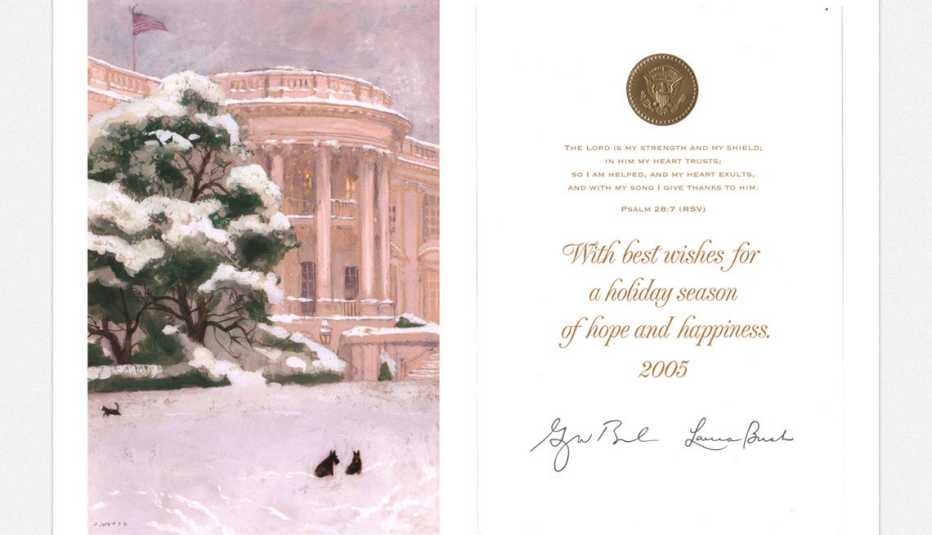AARP Hearing Center
Nothing says “Season's Greetings” more than a holiday card sent by the family residing in America’s most famous home, the White House.
In this nearly-century-old tradition, White House holiday greeting cards are mailed out to both very important people (VIPs) and very important friends (VIFs). In fact, over past decades the number of cards mailed has gone from 1,854 sent by President John F. Kennedy in 1962 (his last Christmas alive) to, according to one researcher, more than 2 million in 2004, under President George W. Bush.
How the White House celebrates Christmas is an apolitical subject that “unifies the country, whether you’re Republican, Democrat, whatever,” says the researcher, Mary Evans Seeley, 80, author of Season’s Greetings from the White House, a book on White House Christmas traditions. The year-end holiday festivities, including the lighting of the National Christmas Tree in December, are valued by whichever party holds office and “bring the country together,” she says.


Over the decades, White House holiday cards have been whimsical, classic, cozy and colorful. They’ve been grand (the Trump family’s 2020 raised golden map of the United States printed on a golden card) and playful (the Obama family’s 2013 card opened to a pop-up of the White House with dogs Sunny and Bo roaming out front).


President Joe Biden and First Lady Jill Biden are continuing the tradition this year with a red card featuring cutouts of holly and berries.
The ‘kindest, simplest gesture’
The coveted holiday cards are collected and valued by those passionate about White House memorabilia. Some cards highlight photographs of the first families, but others showcase original art commissioned by the White House occupants.


To mark President Bill Clinton’s second Christmas in the White House in 1994, about 250,000 holiday cards were sent out, according to artist Thomas McKnight, whose casein-on-canvas artwork was featured on the card. The painting was a whimsical take on the mansion’s Red Room, depicting a candlelit, gift-laden Christmas tree and Socks, the family cat, warmed by a roaring fire. The painting was copied and later mass-produced as a card by American Greetings.






































































